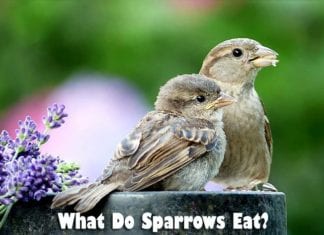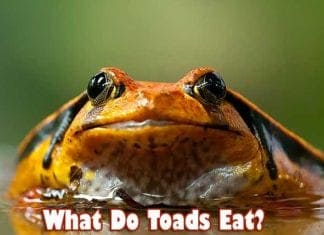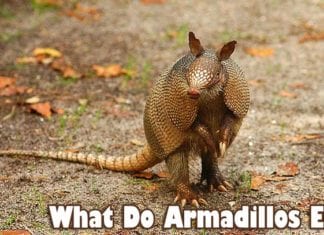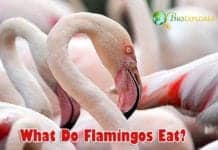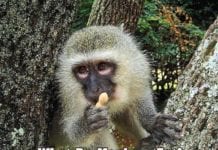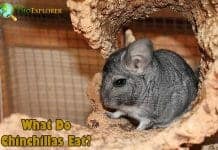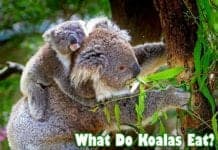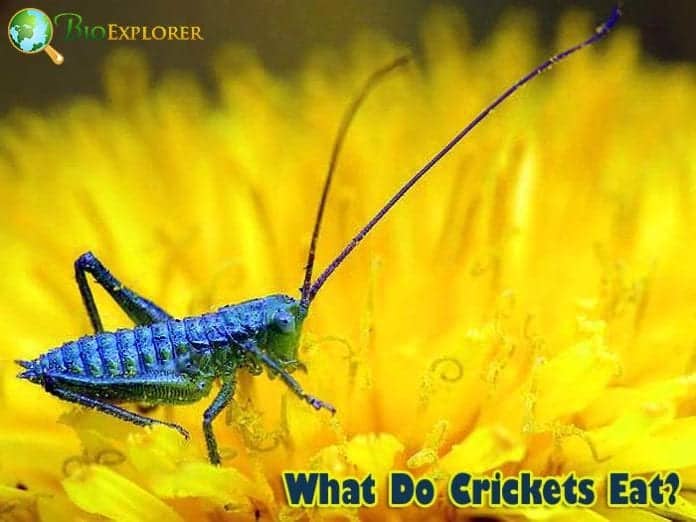
Crickets are insects with long antennae extending beyond their bodies’ length. Crickets are notable for their chirping sound. Crickets are known to be omnivorous. These insects feed on plant and animal materials, as well as decaying matter.
There are many species of crickets in the world of insects. On this page, we explored what crickets eat, their diet by types, how they hunt, how much they consume and all about crickets’ eating-related questions and well-researched answers.
Table of Contents
- What Do Crickets Eat?
- Cricket Vs. Grasshopper Differences
- Types of Crickets and their Habitats
- What Do House Crickets Eat?
- What Do the Jamaican Field Crickets Eat?
- What Do Snowy Tree Crickets Eat?
- What do Mormon Crickets Eat?
- What Do Mole Crickets Eat?
- What do Jerusalem crickets eat?
- What Do Australian Field Crickets Eat?
- What Do Roesel’s Bush-Crickets Eat?
- What Do Katydids Crickets Eat?
- What Do Parktown Prawn Crickets Eat?
- What Do African Mole Crickets Eat?
- What Do Blackthorn Tree Crickets Eat?
- What Do Carolina Ground Crickets Eat?
- What Do Coulee Crickets Eat?
- What Do Four-spotted Tree Crickets Eat?
- What Do Greenhouse Stone Crickets Eat?
- What Do Gundlach’s Bush-crickets Eat?
- How Do Crickets Hunt?
- When Do Crickets Eat?
- How Often Do Crickets Eat?
- What Eats Crickets?
- Where Do Crickets Get the Required Nutrients?
- Do Crickets Eat Ants?
- Do Crickets Eat Mosquitoes?
- What Do Crickets Drink?
- Do Crickets Eat Roaches?
- Do Crickets Eat Cardboard?
- Do Crickets Eat Spiders?
- Do Crickets Eat Grass?
- Do Crickets Eat Clothes?
- Do Crickets Eat Scorpions?
- Will Crickets Eat Each Other?
- What Do Baby Crickets Eat?
- Can Crickets Eat Apples?
- Do Crickets Eat Grasshoppers?
- What do crickets eat in the wild?
- Do crickets eat worms?
- Where Do Crickets Fit in the Animal Food Chain?
What Do Crickets Eat?
| House Crickets | Acheta domesticus | Plants, insects (both alive and dead), including members from similar species. |
| The Jamaican Field Cricket | Gryllus assimilis | Fly pupa and plant seedlings. |
| Snowy Tree Cricket | Oecanthus fultoni | Young fruits (apples, peaches, plums, and cherries), flowers, and foliage. Adult crickets also feed on aphids and caterpillars. |
| Camel Cricket, Camelback cricket, spider cricket, cave weta, and cave cricket | Rhaphidophoridae | Fungus, Plant matter, insects, or even fabric. |
| Mole Crickets | Gryllotalpa gryllotalpa | Larvae, worms, roots, and grasses. Tawny mole crickets are strictly herbivores. |
| Mormon Cricket | Anabrus simplex | Shrubs, forbs, grasses, crops, fruit trees, vineyards, grains, and their own species. |
| Jerusalem Cricket | Stenopelmatus fuscus | Leaves, roots, tubers, their own skin from molting, and small ants. |
| Australian Field Cricket | Teleogryllus commodus | Plant matters. |
| Roesel’s Bush-Cricket | Roeseliana roeselii | Tall grass swards, meadows, grass seeds, and smaller insects. |
| Katydids Cricket | Tettigonia viridissima | Leaves, flowers, bark, seeds, snails, snakes, and lizards. |
| Parktown Prawn Cricket | Libanasidus vittatus | Slugs, snails, moth larvae (cutworms), dead birds, pet droppings, fallen fruits and plant matters. |
| African Mole Cricket | Gryllotalpa africana | Plant roots, larvae, and other insects. |
| Blackthorn Tree Cricket | Oecanthus nigricornis | Mostly Leaves. |
| Carolina Ground Cricket | Eunemobius carolinus | Not enough research data. |
| Coulee Cricket | Peranabrus scabricollis | Mostly vegetation (Artemisia frigida) and cannibalism on its own species. |
| Four-spotted Tree Cricket | Oecanthus quadripunctatus | Smooth oxeye, both plant and animal origin, aphids, leaves, roots, stem membranes, anthers of flowers, and fruits (apples, peaches and plums) |
| Greenhouse Stone Cricket | Tachycines asynamorus | Mostly omnivorous but sometimes carnivorous diet (dead insects and other organic matter). |
| Gundlach’s Bush-cricket | Cyrtoxipha gundlachi | Foliage, leaves, and stem of tall grasses |
![]()
Cricket Vs. Grasshopper Differences
| Anatomy | As an insect, all cricket species’ bodies are made up of 3 main parts: the head, thorax, and abdomen. All species also have two long antennae sticking out from the head. Some species have wings as well, enabling them to jump and fly small distances, while others don’t. Male and female crickets can be distinguished by the latter having a tube-like organ known as an ovipositor, which eggs go through when they are laid. | As an insect, all grasshopper species bodies are made up of 3 main parts: the head, thorax, and abdomen. All species also have two short antennae sticking out from the head. Most species also have wings, usually enabling them to jump and fly small distances, while others don’t. Male and female grasshoppers can be distinguished by the fact that males typically have curved abdomens, while female ones have straight abdomens. |
| Diet | Crickets follow an omnivorous diet, which typically consists of plants like fruits, flowers, and seeds, as well as meat, such as ladybugs, flies, and more. | Grasshoppers primarily follow an herbivorous diet, mainly consisting of fruits, leaves, stems, and other vegetation. However, if it is required, they have been seen to consume weakened/dead insects and small mammals. |
![]()
Types of Crickets and their Habitats
True crickets are classified under the family Gryllidae. About 900 cricket species have been described in this family so far. Six sample species from this family are discussed in this section, which encompasses the general cricket diet across the entire family.
Diets for crickets from other families such as Tettigoniidae, Anostostomatidae, Gryllotalpidae, Trigonidiidae, and Rhaphidophoridae are also discussed on this page.
![]()
What Do House Crickets Eat?
| Animalia | Orthoptera | Gryllidae | Acheta | Acheta domesticus |
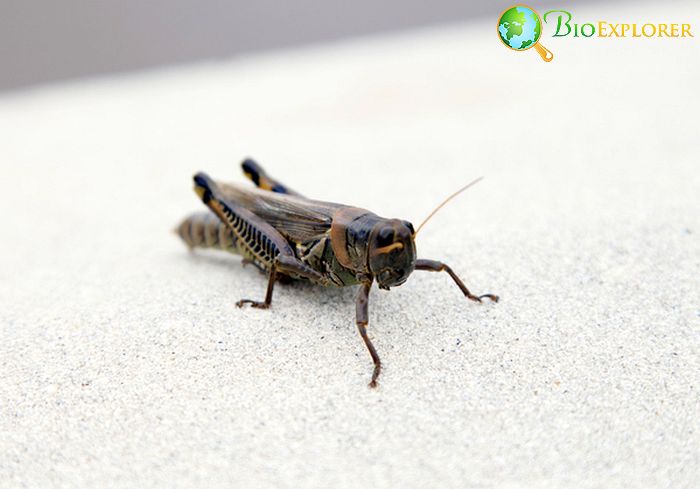
House crickets dine on plants and a wide array of alive and dead insects, including members from similar species.
- The house crickets are considered to be natives of the southwestern parts of Asia.
- These insects can be found in almost every part of the world, all thanks to human distribution.
- House crickets are light yellow-brown, with three crossbands running on their heads.
- House crickets inhabit structures with adequate moisture and warmth access.
![]()
What Do the Jamaican Field Crickets Eat?
| Animalia | Orthoptera | Gryllidae | Gryllus | Gryllus assimilis |
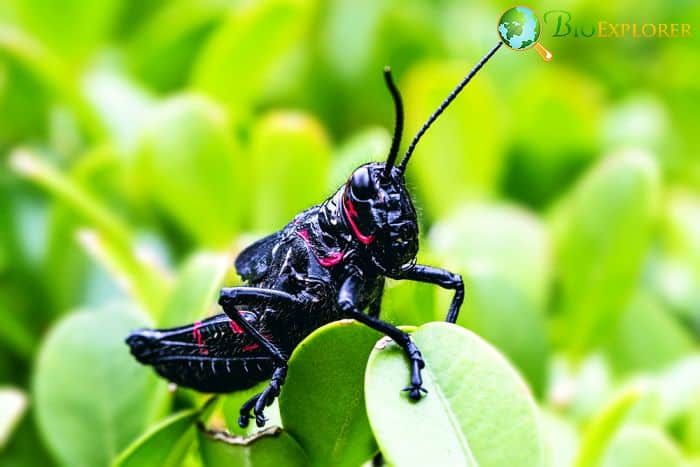
The Jamaican field cricket is omnivorous. Its diet consists of the fly pupa and plant seedlings. Because of consuming seedlings, crickets are considered to be agricultural pests.
- Jamaican field crickets have distinct black and red stripes on their bodies.
- The Jamaican field cricket was first spotted in Jamaica.
- This species is found in high abundance in the West Indies.
- As suggested by its name, the Jamaican field cricket inhabits the fields.
- It can be found in lawns, fields with weeds, on roadsides, and other open areas.
![]()
What Do Snowy Tree Crickets Eat?
| Animalia | Orthoptera | Oecanthidae | Oecanthus | Oecanthus fultoni |
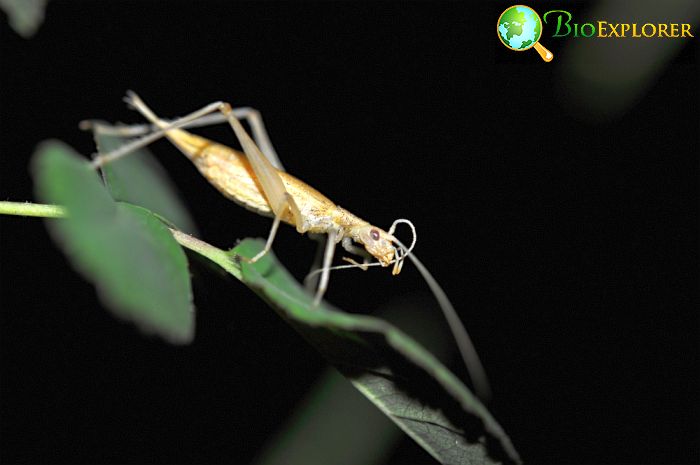
The snowy tree cricket consumes young fruits (for example, apples, peaches, plums, and cherries), flowers, and foliage. Adult members have a broad palate. Adult crickets also feed on aphids and caterpillars.
- The snowy tree cricket is best described as nature’s thermometers.
- The rate at which they chirp corresponds with the temperature.
- The snowy tree crickets are pale green and have a yellow to orange marking on the top of their heads.
- These crickets can be found in vegetation, deciduous forests, gardens, and wooded environments. As their name suggests, these tree crickets are often found on trees or shrubs.
![]()
What do Mormon Crickets Eat?
| Animalia | Orthoptera | Tettigoniidae | Anabrus | Anabrus simplex |
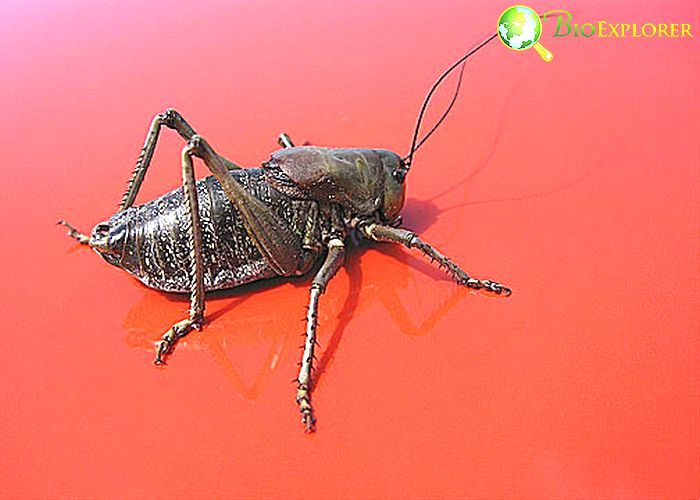
Mormon cricket usually eats rangeland shrubs, forbs, and grasses.
- During migration, adult Mormon crickets feed on forage crops, fruit trees, vineyards, and grains. These Mormon crickets travel long distances in search of food.
- Mormon crickets live in the west of North America in sagebrush and forbs.
- Per 2006 research published in PMC, Mormon crickets move in migratory bands to find their primary nutrients, protein, and salt. Also, they need to move forward in swarm behavior to avoid being eaten by hungry Mormon crickets following them in the rear.
![]()
What Do Mole Crickets Eat?
| Animalia | Orthoptera | Gryllotalpidae | Gryllotalpa | Gryllotalpa gryllotalpa |
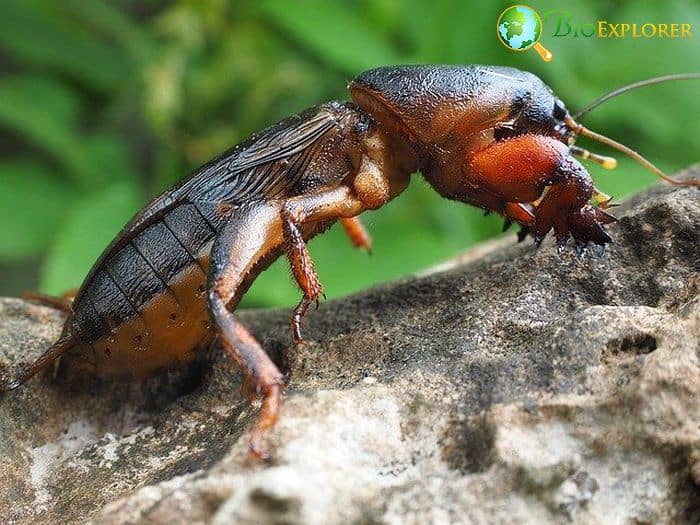
Mole crickets have a variety of things in their diets.
- Tawny mole crickets are strictly herbivores, while other types of mole crickets are omnivores, feasting on larvae, worms, roots, and grasses.
- Interestingly, the southern mole cricket hunts for its diet by attacking live insects.
- Mole crickets are known to leave at night to forage for leaves and plant materials and drag them underground before eating.
- Mole crickets also love to consume the roots of plants.
![]()
What do Jerusalem crickets eat?
| Animalia | Orthoptera | Stenopelmatidae | Stenopelmatus | Stenopelmatus fuscus |
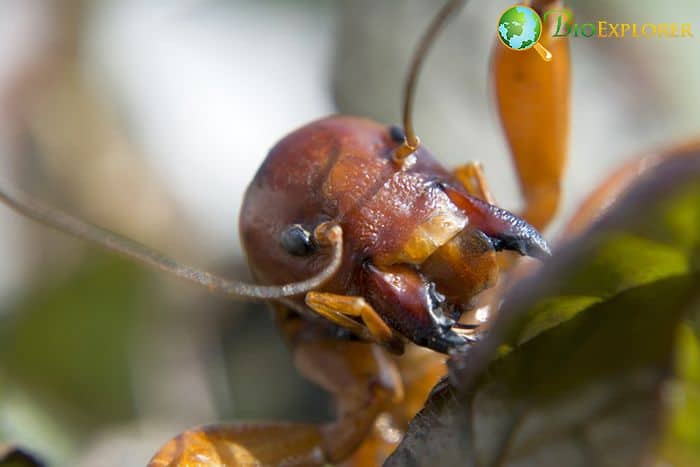
Jerusalem crickets are one of nature’s recyclers who feed on dead organic matter, such as roots and tubers that are already dead or dying.
- Interestingly, Jerusalem crickets eat their skin sheds during the molting process.
- These red skull crickets also like to eat other small insects to get nourishments.
- Currently, these potato bugs (another name for Jerusalem crickets) reside in the Western United States and parts of Mexico.
- There are several theories on the origin of the name Jerusalem crickets. One possible explanation for the name is that Franciscan priests working with the Navajos heard them call the cricket “skull head” and associated this with Skull Hill, the suggested burial place of Jesus.
![]()
What Do Australian Field Crickets Eat?
| Animalia | Orthoptera | Gryllidae | Teleogryllus | Teleogryllus commodus |
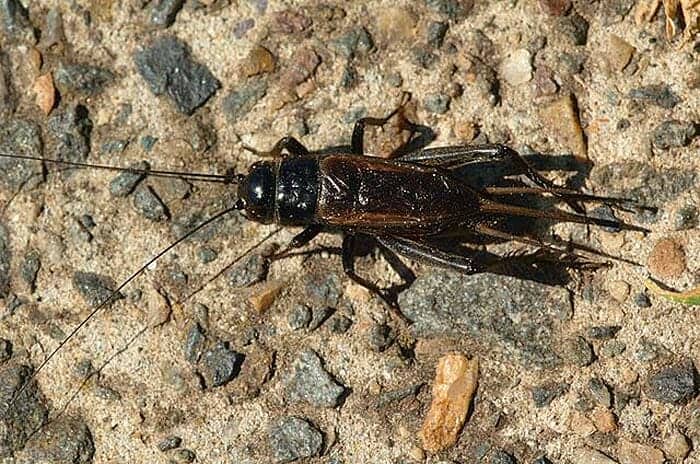
Australian Field Cricket mainly feeds on plants and does not prefer any plant types. This type of cricket is found in Australia and New Zealand.
![]()
What Do Roesel’s Bush-Crickets Eat?
| Animalia | Orthoptera | Tettigoniidae | Roeseliana | Roeseliana roeselii |
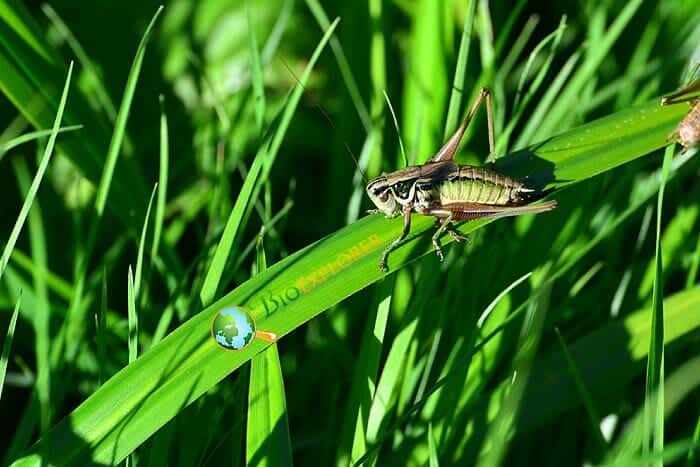
Roesel’s Bush-cricket has an omnivorous diet and dines on tall grass swards, meadows, grass seeds, and smaller insects. It is primarily found in central Europe, Finland, Latvia, and Sweden.
![]()
What Do Katydids Crickets Eat?
| Animalia | Orthoptera | Tettigoniidae | Tettigonia | Tettigonia viridissima |
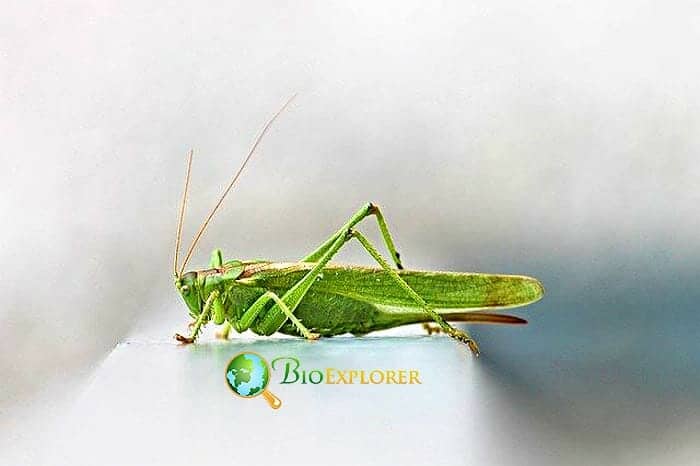
Katydids’ diets consist of leaves, flowers, bark, seeds, snails, snakes, and lizards. These crickets are also known as long-horned grasshoppers and are found in many parts of the world.
![]()
What Do Parktown Prawn Crickets Eat?
| Animalia | Orthoptera | Anostostomatidae | Libanasidus | Libanasidus vittatus |
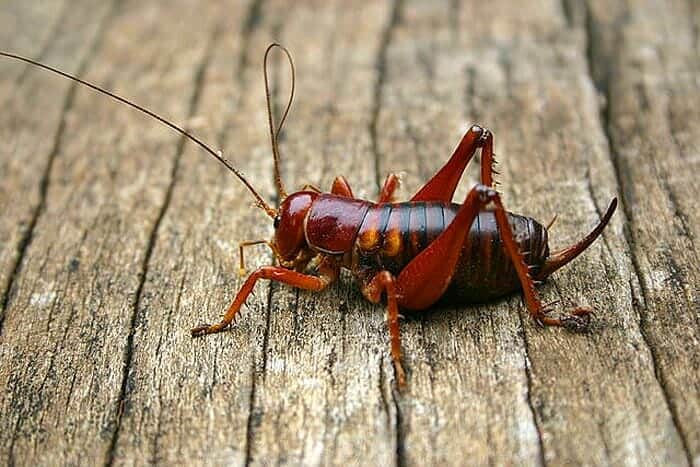
Parktown Prawn Cricket looks like a house cockroach with a dark-brown shell and wings. It has an omnivorous diet that feeds mainly on slugs, snails, moth larvae (cutworms), and a wide array of plant matters. In addition, Parktown Prawn cricket is known to feed on dead birds, pet droppings, and fallen fruits. These crickets are endemic to southern Africa.
![]()
What Do African Mole Crickets Eat?
| Animalia | Orthoptera | Gryllotalpidae | Gryllotalpa | Gryllotalpa africana |
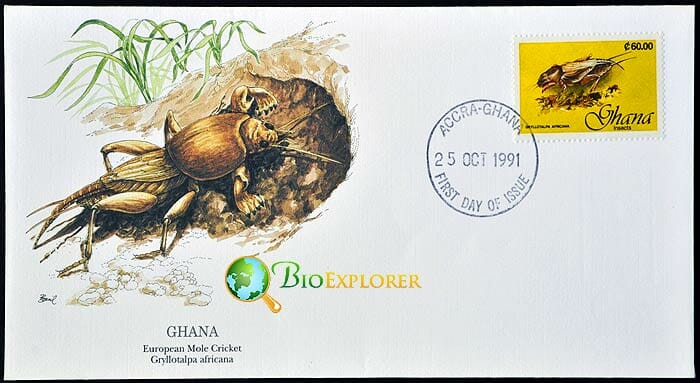
African mole crickets live underground and feed on plant roots, larvae, and other insects, and they can fly too. These crickets are native to Africa but also found in Asia and southern Europe. So, they are also known as European Mole Cricket.
![]()
What Do Blackthorn Tree Crickets Eat?
| Animalia | Orthoptera | Gryllidae | Oecanthus | Oecanthus nigricornis |
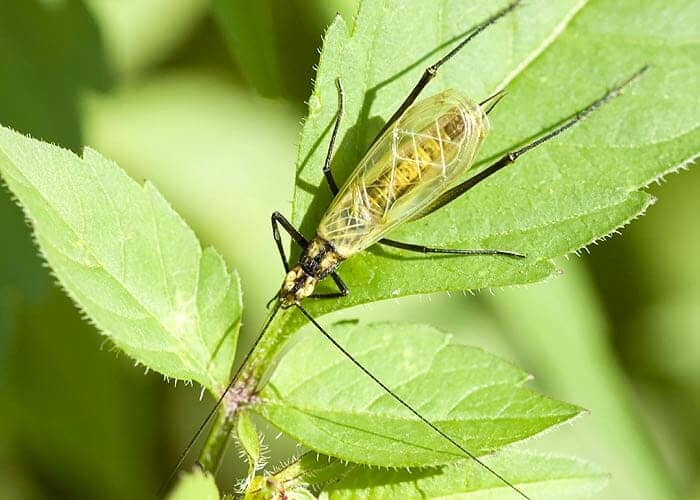
Blackthorn tree cricket mainly feeds on leaves. Interestingly, these tree crickets have transparent bodies where you can see their internal organs through their skin. These crickets are found in the eastern USA and Canada.
![]()
What Do Carolina Ground Crickets Eat?
| Animalia | Orthoptera | Trigonidiidae | Eunemobius | Eunemobius carolinus |
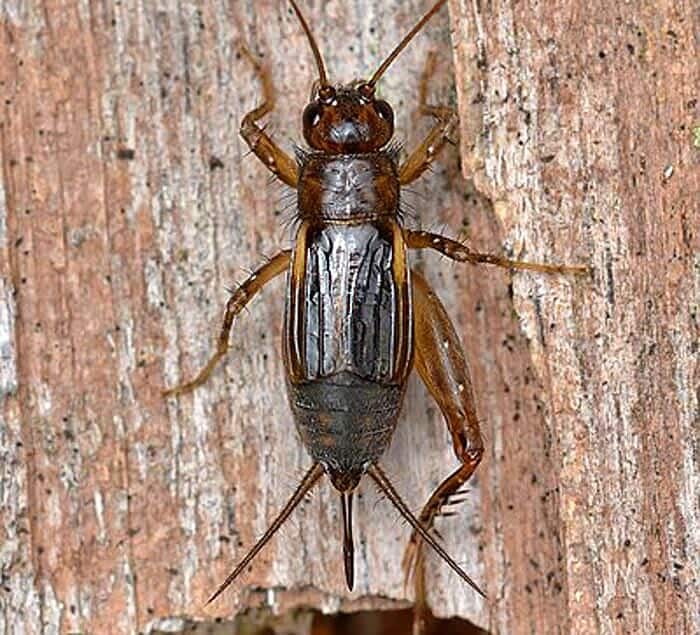
Not enough research data have been published on this cricket’s dietary patterns. However, Carolina ground crickets are widely distributed in most U.S. and the southern portions of the eastern Canadian Provinces.
![]()
What Do Coulee Crickets Eat?
| Animalia | Orthoptera | Tettigoniidea | Peranabrus | Peranabrus scabricollis |
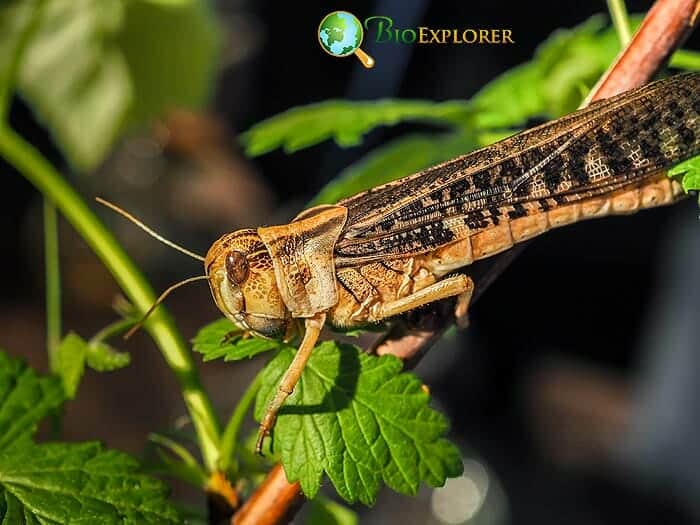
The Coulee cricket consumes mostly vegetation and will like fringed sage (Artemisia frigida) when possible in dry sagebrush regions. This species has also been seen to have a desire for insect flesh. In its absence, they resort to cannibalism, which will eat a disabled or weak member of its community. However, it rarely attacks or disables a healthy individual. These species are widely seen in the Montana range.
![]()
What Do Four-spotted Tree Crickets Eat?
| Animalia | Orthoptera | Gryllidae | Oecanthus | Oecanthus quadripunctatus |
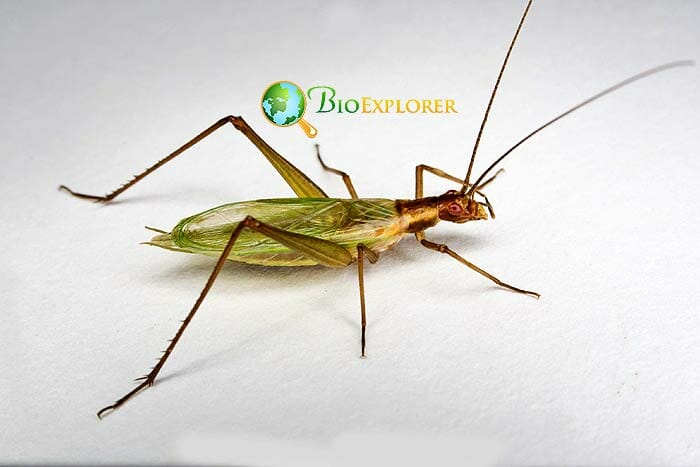
Four-spotted tree crickets eat smooth oxeye, a great variety of plant matters, & aphids; They also eat plant material by biting holes in leaves, the outer membrane of stems, the anthers of some plant flowers, making holes in ripe fruit such as apples, peaches, and plums to feed on the inner pulp and eat fruiting bodies of fungi. They are found in North America.
![]()
What Do Greenhouse Stone Crickets Eat?
| Animalia | Orthoptera | Rhaphidophoridae | Tachycines | Tachycines asynamorus |
Greenhouse stone cricket is considered to be one of the cave crickets. It is omnivorous, sometimes carnivorous, or a hunter of dead insects and other organic material. These crickets are native to Asia but also found in European heated greenhouses. The other names of this cricket are greenhouse camel cricket or greenhouse stone cricket.
Reference: Grasshoppers, Crickets and Cockroaches of the British Isles by David R. Ragge (1965) – Page 299
![]()
What Do Gundlach’s Bush-crickets Eat?
| Animalia | Orthoptera | Trigonidiidae | Cyrtoxipha | Cyrtoxipha gundlachi |
Gundlach’s bush-cricket dines on foliage, leaves, and stems of tall grasses. These crickets are primarily found in North America. Also, there are 30 species of crickets under the genus Cyrtoxipha. Their dietary patterns are pretty much the same.
![]()
How Do Crickets Hunt?
Crickets target and capture unsuspecting victims in their hunting quests.
- Their preferred sources of animal proteins include aphids, mites, and ladybugs.
- In the event of scarcity, a colony of crickets would engage in cannibalism where they target, capture, and hunt weak members of their species.
![]()
When Do Crickets Eat?
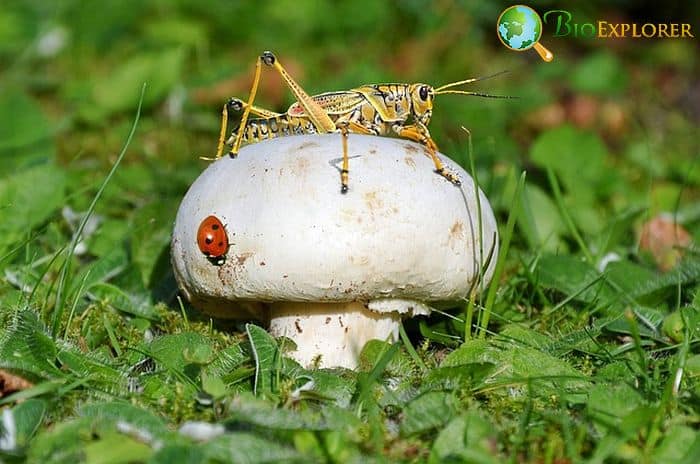
Most crickets are nocturnal, meaning they tend to come out at night to feed.
- Other crickets, like tree crickets, display both crepuscular and nocturnal behavior.
- This means that aside from being active at night, they are also active at dusk.
![]()
How Often Do Crickets Eat?
Crickets tend to feed as readily as they need to and as long as their food is readily available.
- During harsh weather conditions like the cold winter season, crickets enter into a process referred to as diapause.
- During such conditions, the crickets cease growth, and their bodies shut off their biological processes.
- In these conditions, the rate of feeding drops significantly to almost nil.
![]()
What Eats Crickets?
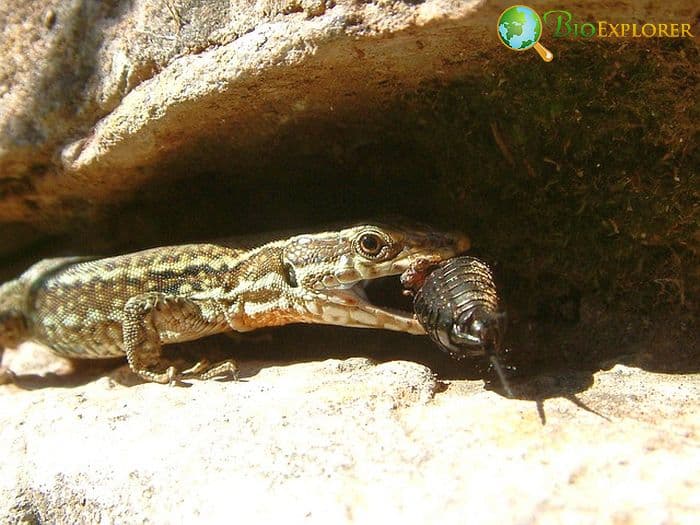
Crickets have many predators, which is all thanks to the inability of these insects to actively launch defensive tactics against their potential predators. Examples of organisms that rely on crickets for food include salamanders, armadillos, spiders, turtles, tortoises, frogs, and some lizards.
Several bird species including Greater Antillean Grackles are also predators of crickets.
What Do Sparrows Eat?
What Do Toads Eat?
What Do Armadillos Eat?
![]()
Where Do Crickets Get the Required Nutrients?
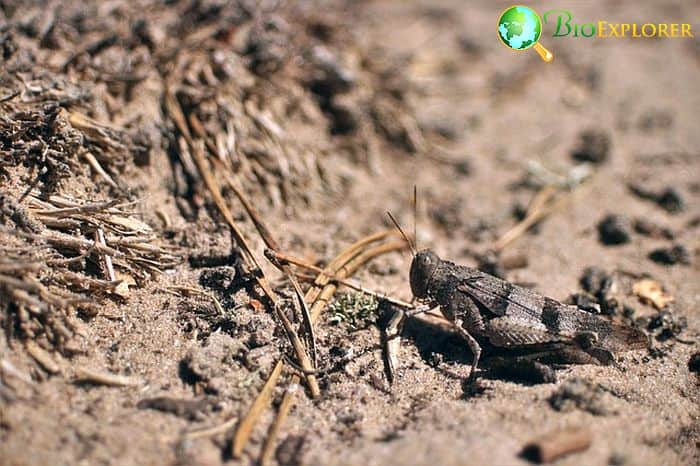
Crickets need both salt and protein in their diet. In the wild, crickets ingest soil soaked in animal’s urine as one of the salt sources. When there is a deprivation of protein and salt, crickets avidly eat each other and exhibit cannibalistic behavior. Typically, crickets predate on wounded and weak members of their own species.
![]()
Do Crickets Eat Ants?
Yes, crickets do eat ants, especially Camel crickets. They usually lurk around ant nests and eat the vulnerable young ones first. As crickets are omnivores, they pretty much eat anything, including plants and small insects, live or dead.
![]()
Do Crickets Eat Mosquitoes?
No – though mosquitoes are insects, there is no recorded evidence of crickets eating mosquitoes.
![]()
What Do Crickets Drink?
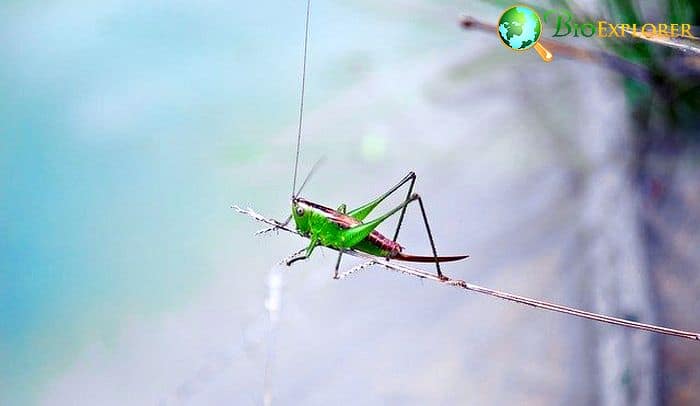
Yes, crickets do drink water. If you have crickets as pets, then consider freshwater or tap water. Also, replace the water every 3 days to avoid a stinking smell around the water area.
![]()
Do Crickets Eat Roaches?
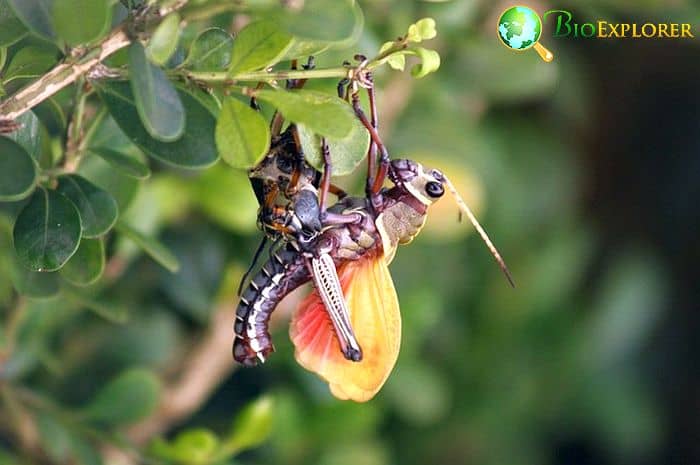
Yes. As crickets are omnivores and eat small insects and worms as well. When scarcity of food, crickets hunt their own species.
![]()
Do Crickets Eat Cardboard?
As cardboard and toilet paper tubes are made of paper products (full of fibers) and are indirectly manufactured from plant/tree materials, crickets enjoy eating them. However, crickets do not eat styrofoam or plastic materials as they cannot digest any artificial chemicals.
![]()
Do Crickets Eat Spiders?
As mentioned earlier, crickets are omnivorous and eat spiders, especially young ones. Interestingly, spiders are one of the predators of Crickets.
![]()
Do Crickets Eat Grass?
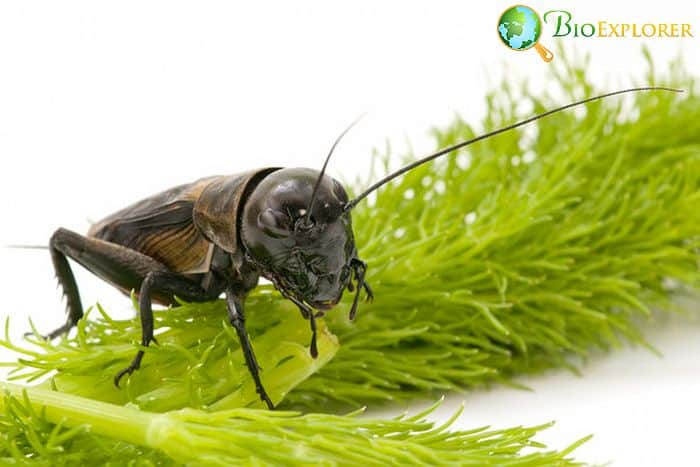
Yes. In addition to insects, crickets do eat organic materials (plant decay or fresh plants), including leaves, grass, fruits, and veggies. Mole crickets are known to eat grass, especially tawny mole crickets. Also, the grass is one of the primary food sources for Mormon crickets.
![]()
Do Crickets Eat Clothes?
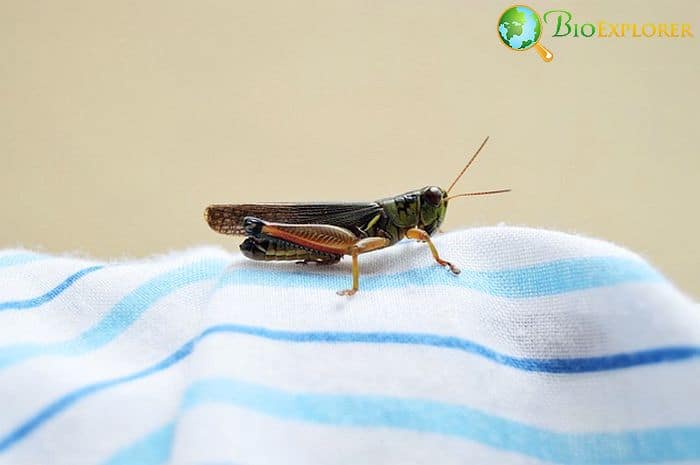
Generally, crickets do not eat clothes as standalone food. However, if there is a food stain or body soil on unwashed clothes, crickets tend to eat them. While eating the stuck residue from the clothes, crickets can inadvertently eat a thread that leaves a small hole. Generally, these holes become larger after the laundry.
![]()
Do Crickets Eat Scorpions?
Yes, crickets do eat scorpions. Typically, if the scorpion is big enough, a team of crickets will gang up and attack it. In general, crickets will eat young scorpions with little effort. Crickets use the same strategy on spiders as well.
![]()
Will Crickets Eat Each Other?
Yes – the cannibalistic behavior is inevitable for crickets.
- Despite having enough plant materials and water to consume, they tend to feast on their own species, especially young or weak ones, if there is no protection around them.
- If you have crickets as pets, follow adequate protocols to avoid crickets eating each other by feeding them proper food/water and good fencing around them.
![]()
What Do Baby Crickets Eat?
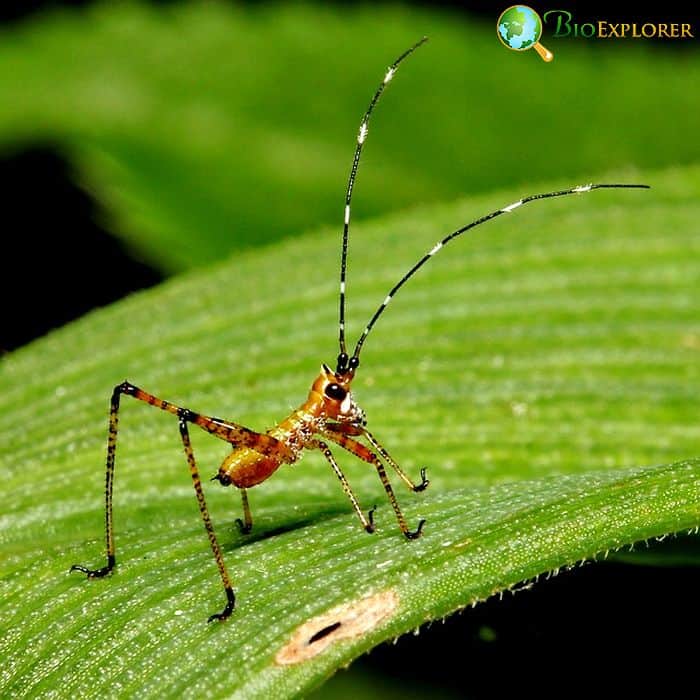
In the wild, baby crickets eat leaves, tomatoes, grass, fruit, and leafy veggies such as lettuce, cabbage, and roots.
- For pet baby crickets, you can feed mandarin/oranges to quench their thirsty or fresh apple slices.
- Note that if crickets are bred as food for bearded dragons or leopard geckos, then mandarin or oranges are not recommended because crickets become poisonous to them.
![]()
Can Crickets Eat Apples?
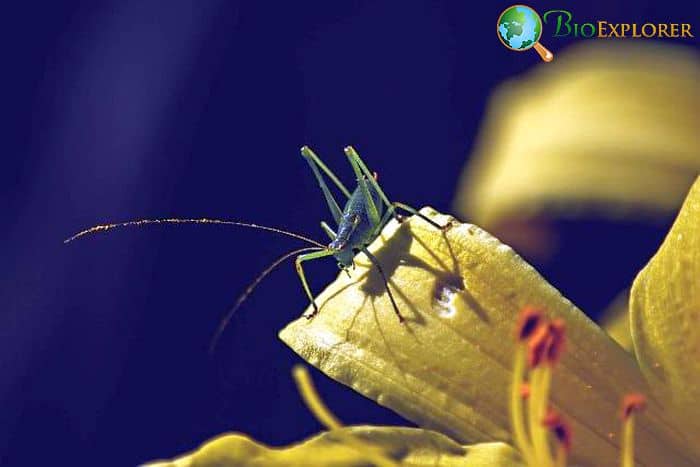
Yes, apples are one of the delicacies for crickets.
- The other fruits that crickets prefer are bananas, mandarin oranges, and grapes.
- You can feed crickets the middle core or stem of the apple after cutting out the flesh. Crickets get their dietary fibers from apples.
![]()
Do Crickets Eat Grasshoppers?
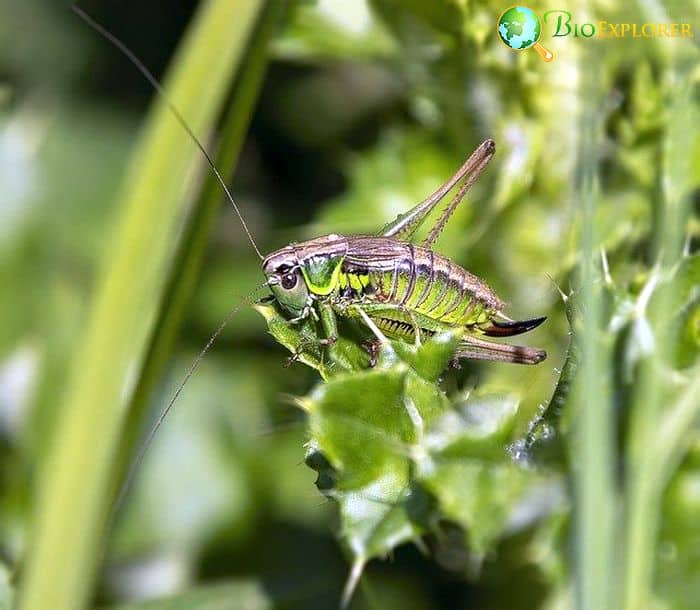
Yes. Although Crickets and Grasshoppers belong to the same order Orthoptera, crickets do eat both dead and live grasshoppers due to being omnivorous and cannibalistic.
![]()
What do crickets eat in the wild?
Crickets typically consume fruits, flowers, seeds, insects, and more in the wild. On the other hand, while kept in captivity, they are commonly fed some combination of the aforementioned foods, though often along with other things, such as grains, commercial dog food, cricket food, apples, oranges, plums, and more.
![]()
Do crickets eat worms?
Many cricket species commonly have ladybugs in their regular diet (they are a high source of protein). On the other hand, crickets do not typically consume worms of any kind. However, it’s worth mentioning that they do often eat mealworms, the larval form of the mealworm beetle, along with other insect larvae.
![]()
Where Do Crickets Fit in the Animal Food Chain?
Crickets play an essential role in the animal food chain as prey and predators.
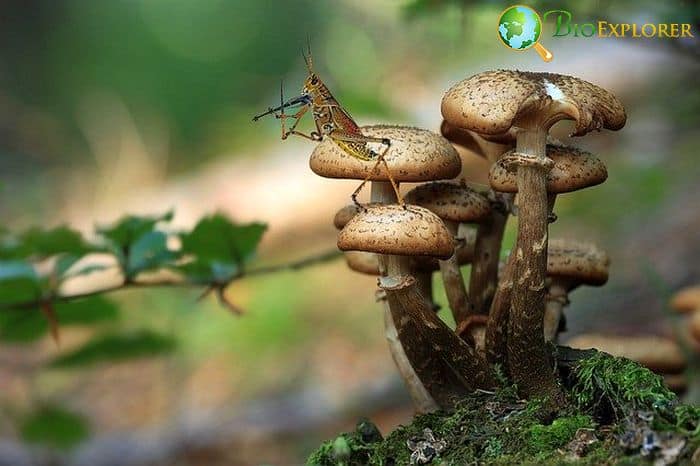
- In their role as prey, crickets are a great source of protein to a vast range of organisms, including lizards, salamanders, frogs, and some bird species.
- In their role as predators, crickets feed on live insects with the example of aphids. As a result of this role, crickets help maintain the natural balance of these organisms.
- Crickets also engage in scavenging activity, a role that helps rid the environment of dead organisms.
- In this capacity, crickets promote nutrient cycling, which helps clean the environment for other organisms to propagate.
Top 20 Biomass Energy Pros and Cons
![]()
The absence of crickets in the animal food chain would collapse the food webs in their respective ecosystems.


